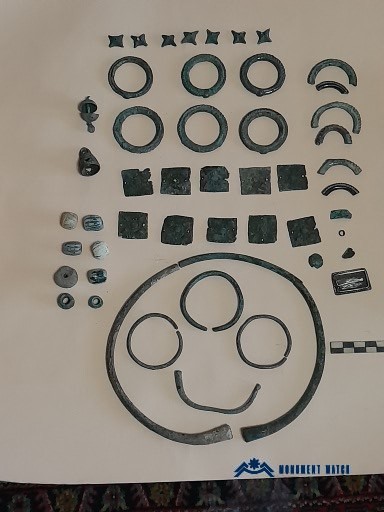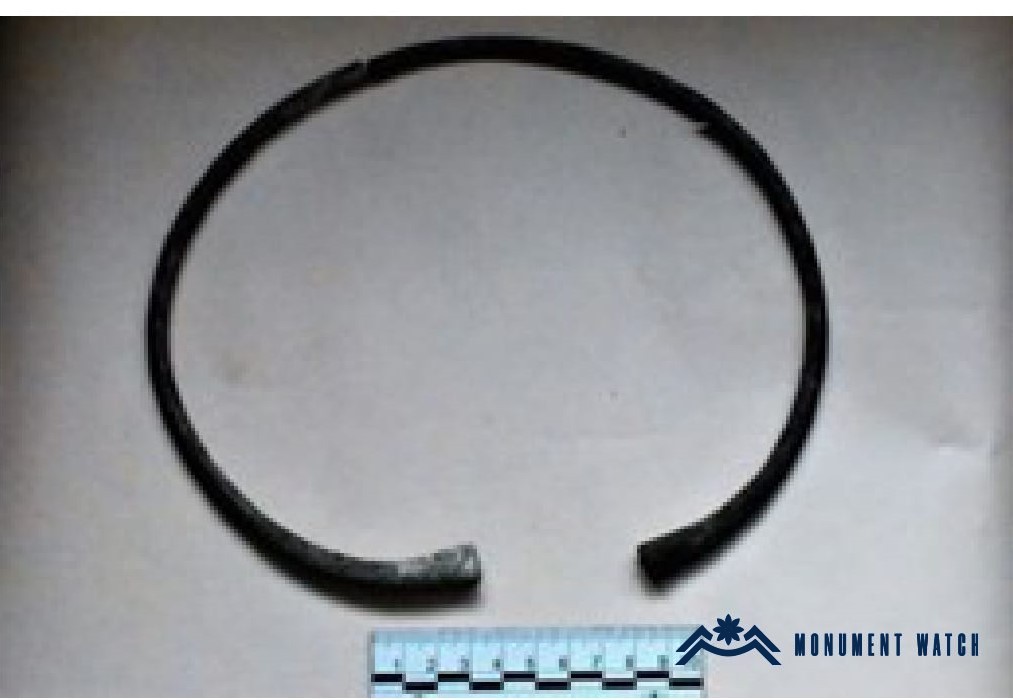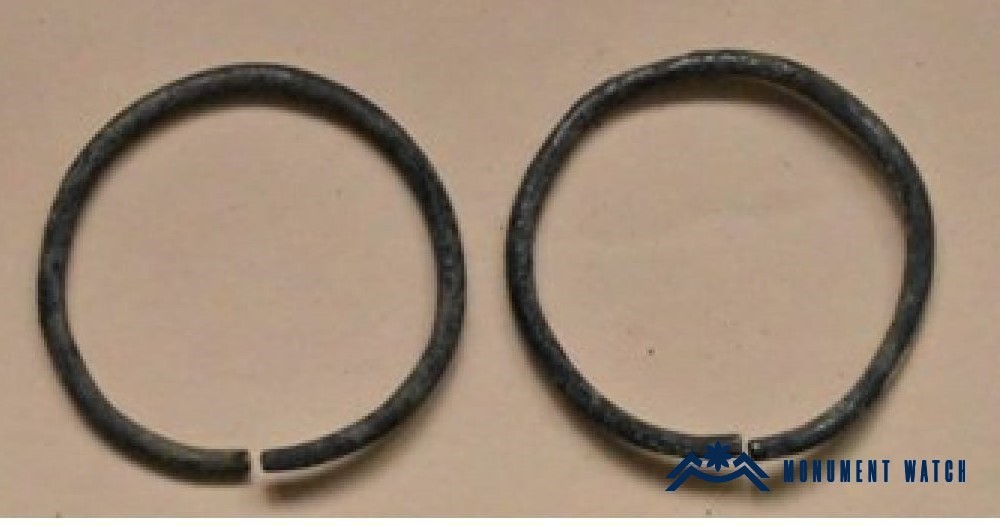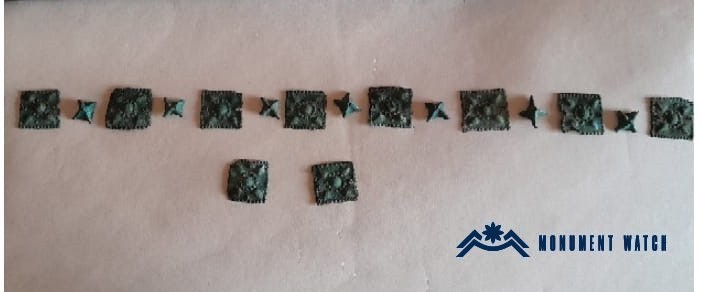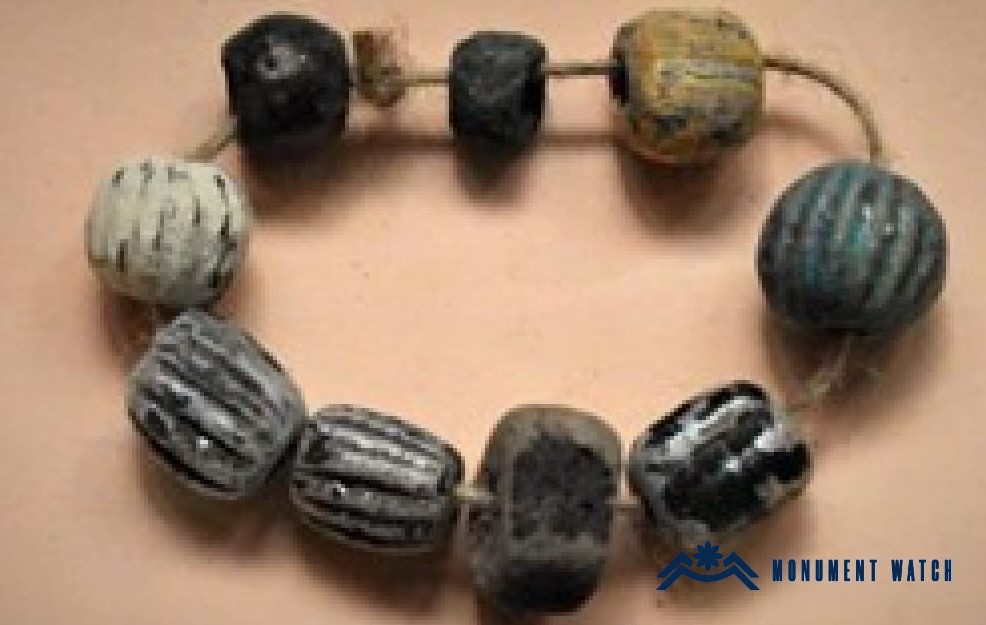The Burial Ground at the “Qinchi Khugh” Area of Vaghuhas Village
Location
The monument is situated on the eastern outskirts of Vaghuhas village, Martakert District, Republic of Artsakh, in the "Qinchi Khugh" sector. Since September 2023, it has been under Azerbaijani occupation.
Historical Overview
Vaghuhas ranks among Artsakh's most ancient settlements. According to the register of the Department for Tourism and Protection of the Historical Environment under the Government of Artsakh, 125 heritage assets from Vaghuhas have been cataloged, including over eighty khachkars, tombstones, vernacular homesteads, and related features (Ministry of Culture, Education, and Science of the Republic of Artsakh, official certificate).
Archaeological Investigation
The site was first identified in February 2023 during earth-moving operations. During subsequent construction work, one tomb was inadvertently destroyed, and the orientation of the human skeletal remains could not be ascertained. A local resident provided several significant archaeological specimens: an assemblage of bronze personal ornaments (Safaryan 2024; Fig. 1). Unfortunately, no ceramic sherds have been preserved.
Among the preserved metal ornaments, particular attention must be drawn to a bronze neck ring of circular cross-section with conical wire-ended terminals (diameter: 23 cm; Fig. 2). Analogous neck rings have been recorded on Armenian monuments and are dated to the 4th–3rd centuries BCE (Tiratsyan 1985, 40).
The remaining objects include two plain bronze‐wire ear-rings with beveled, interlocking terminals (diameter 5 cm; Fig. 3), a small plain bronze‐wire bracelet with open ends (diameter 5.5 cm), and a fragment of a bronze bracelet with thickened terminals and a central concavity (diameter 7.5 cm). Comparable examples appear in Armenian contexts dated to the 6th–4th centuries BCE (Tiratsyan 1985, 40).
The metal objects likely sewn onto the deceased's garments are particularly interesting. Among these are six cast bronze rings bearing a fir-tree motif on both faces and around the circumference (Fig. 4). A small sprue remains on one side of each ring, probably the remnant of the casting mold pour hole (diameter 4.7–4.3 cm). Also preserved are five fragments of similar rings and a small fragment of a bronze ring fashioned from thick wire, its exterior surface bearing notches (diameter 3–2 cm).
The following assemblage comprises eight star-shaped buckles (Ø 1.5 cm) and ten square plates (2.7 × 2.7 cm) (Fig. 5). The star-shaped buckles are fashioned from thin bronze sheets, each bent and pinched at four equidistant points. Analogous fasteners are well attested in Late Bronze Age and Early Iron Age sites across Transcaucasia (Devedjian 1981, 63). One such example was recovered in Artsakh at a Karablur burial dated to the 11th–9th centuries BCE, although that particular piece was of iron (Safaryan 2001, 128). It is plausible that these buckles were sewn onto a leather belt.
The ten square plates, likewise cut from thin bronze sheets, bear stamped ornamentation: a central raised disk surrounded by thirteen small circular stamps aligned along the plate's diagonals, with a conical boss at each corner. Around the perimeter, forty identical stamped dots form a border, and each plate is pierced by two holes for attachment to a leather strap. The belt likely consisted of alternating star-shaped and square fittings. Belts incorporating metal plaques sewn onto leather or felt backings, decorated by stamping, are known from as early as the Urartian period, where they appear to have held ritual significance and served as protective amulets (Tiratsyan 1985, 34).
The final assemblage of objects comprises beads: one globular, bombiform bead of so-called Egyptian faience—known from the 6th to the 1st centuries BCE—three fluted, barrel-shaped elongated glass paste beads, two beads cut from bronze sheet, two from paste, and one from fired clay (Fig. 6).
An on-site survey revealed a necropolis to the east of Vaghuhas village, dating to the 7th–4th centuries BCE. Slightly downhill from this area, we recorded a pit burial disturbed during road construction. Unfortunately, the road and landowner did not preserve any artifacts from that burial.
Thus, morphological analysis permits us to date both the accidentally discovered burial and the necropolis in which it was found to the 7th–4th centuries BCE.
The condition Before, During, and After the War
Before the war, the burial ground was semi-ruined. No information is available regarding its current condition.
Bibliography
- Tiratsyan 1985 - Tiratsyan G., Armenia in the 6th–4th Centuries BCE // Archaeology of the USSR: The Earliest States of the Caucasus and Central Asia (ed. B. Rybakov), Moscow.
- Devedjian 1981 - Devedjian S., Lori-Berd, Yerevan.
- Safaryan 2001 - Safaryan V., "Newly Discovered Archaeological Materials from the Karablur Site in Mehtishen Village," ArPU Scientific Bulletin, no. 1.
- Safaryan 2024 - Safaryan V., "Archaeological Investigations in Artsakh after the 44-Day War (2021–2023)," in Armenia as a Crossroads of Civilizations: Historical and Cultural Interactions. Proceedings of the International Conference, Yerevan: Antares Publishing.
- Certificate of Monuments of the Ministry of Education, Science, Culture and Sport of the Republic of Artsakh - Certificate of Department of Monuments Protection and Study of Tourism Department.
The Burial Ground at the "Qinchi Khugh" Area of Vaghuhas Village
Artsakh
